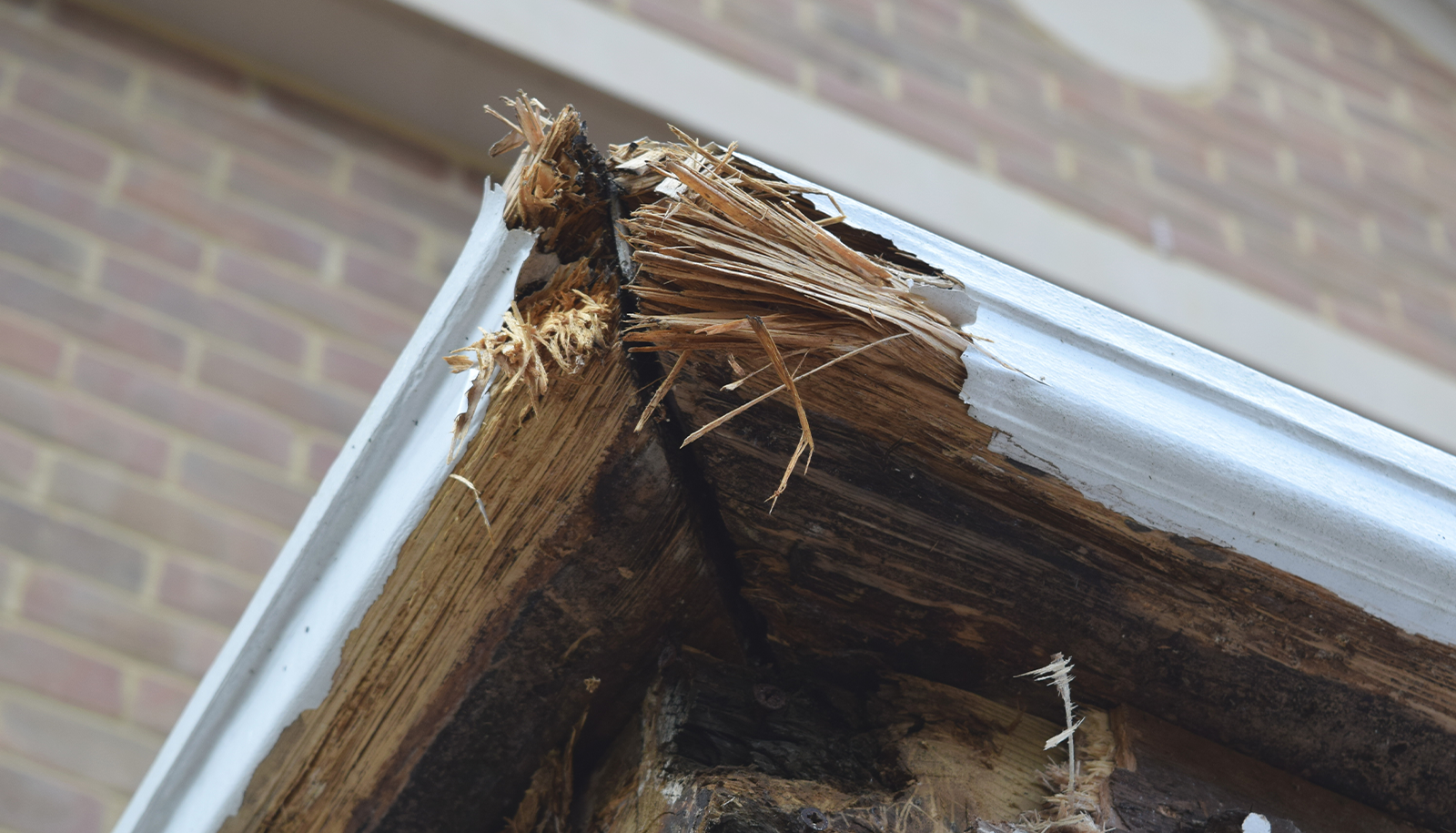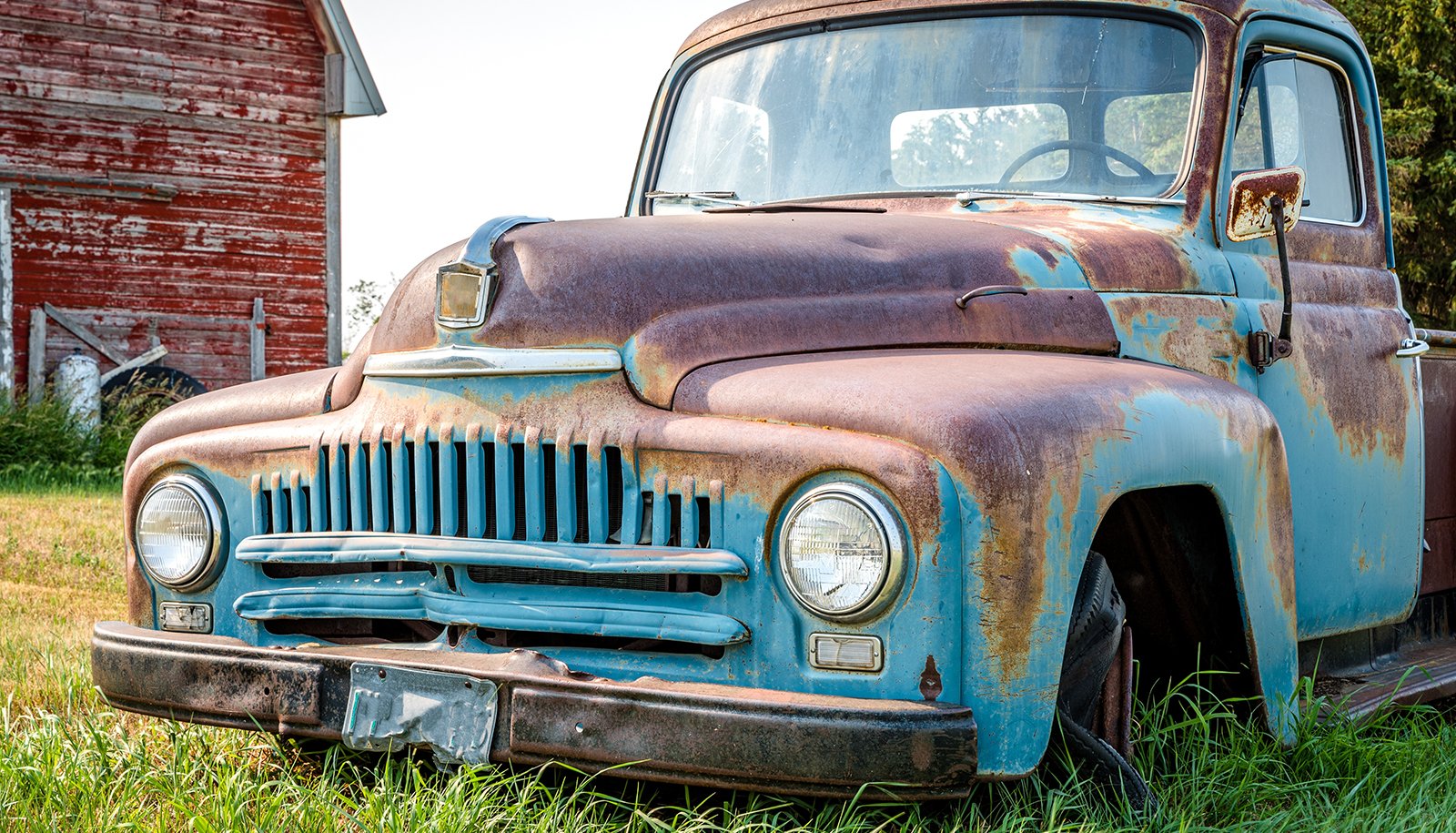“You have wood rot,” isn’t a sentence any homeowner wants to hear. But just like termite damage, it’s a reality that properties face every day.
With two forms — wet and dry rot — wood rot is responsible for an estimated $17 billion in damage every year in the United States.
With that much potential damage in mind, you’re probably thinking about how you can protect your home from wood rot and whether your homeowners insurance has you covered.
Here’s what you’ll learn about in this post:
- What is wood rot and what causes it?
- Does homeowners insurance cover wood rot?
- How to identify, manage, and prevent wood rot
1. WHAT IS WOOD ROT AND WHAT CAUSES IT?
Woot rot is a type of fungal decay that spreads and destroys timber. When you think of how much wood makes up your home, it’s overwhelming to consider the damage wood rot could do. When dark, moist locations aren’t regularly inspected for wood rot, they become potential locations for wood rot. The fungi that causes the damage thrives in dark, muggy, and humid environments, like basements or crawl spaces, attics, and even behind appliances. Leaks or floods that aren’t completely remediated can often be the catalyst for wood rot.
2. DOES HOMEOWNERS INSURANCE COVER WOOD ROT?
Unfortunately, wood rot that appears on its own is typically not covered by your homeowners insurance policy.
Since homeowners insurance coverage is meant to protect from sudden incidents, damage like wood rot is seen as preventable with basic measures. Most homeowners insurance policies don't cover wear and tear, gradual damage, or maintenance issues.
That said, there are certain situations where unforeseen disasters cause wood rot. In these cases, there is a possibility you’ll be covered through your homeowners insurance coverage.
When Does Homeowners Insurance Cover Wood Rot?
When wood rot is the result of sudden and accidental peril, you might be covered.
For instance, if you have a flood or a leak that also causes water damage to wooden floor joists that were out of sight, you’ll likely be covered for the incident. That said, in certain instances the same situation might slowly occur over time and would be noticed through regular maintenance. In that case, the claim would not be covered.
As always, review your unique policy closely to determine if there are any special exclusions or coverage issues you’ll need to be aware of.
Should You File A Homeowners Insurance Claim For Wood Rot?
If you discover wood rot in your home that resulted from other covered damage, be sure to submit a claim to your insurance carrier immediately.
Like any property damage, it’s important to assess whether it will be beneficial to file a claim and pay your deductible or simply pay for repairs out of pocket. That decision is entirely unique to you and your budget, so consider your options wisely.
3. HOW TO IDENTIFY, MANAGE, AND PREVENT WOOD ROT
Your best protection from wood rot is early detection and is considered regular maintenance. Do your best to be proactive now so wood rot isn’t a problem later on.
What Does Dry Rot Look Like?
If you’re doing regular inspections of your own home, here’s what to look out for when it comes to dry rot:
- Brittle-looking or weak wood
- Damaged wood
- Damp or musty smell
- Orange or brown dust
What Does Wet Rot Look Like?
Alternatively, wet rot occurs — as the name suggests — when the fungi grows on wet wood. Identifying wet rot is slightly different than dry rot, including:
- Cracked wood
- Damp or musty smell
- Darker looking wood
- Soft or spongy wood
- Shrinking wood
- Visible fungus
How to Manage & Prevent Wood Rot
Since none of us wish for wood rot in our homes — and now you know that most homeowners insurance policies won’t cover wood rot damage when it occurs on its own — you’re probably wondering how to prevent wood rot.
Don’t ignore high risk areas: “Wet rooms” like the kitchen, bathrooms, and laundry room can provide the perfect recipe for wood rot, with plenty of moisture and dark areas for the fungus to grow. Additionally, keep a close eye on the attic and basement — if you have them — to ensure leaks or excess moisture aren’t beginning to collect anywhere.
Don’t ignore roof damage: A broken or damaged shingle or two might not seem like a big deal, but it can be devastating for water damage. Water can easily find its way into your attic or crawl space with roof damage, so inspect the roof regularly. Keep gutters clean: If your gutters are clogged with debris, rainwater or even melting snow can potentially leak into your home. Check and clear out your gutters regularly.
Make space outside: Keep shrubs, bushes, and trees away from the side of your home. When these plants are wet, the moisture can easily find its way into your home. Take time to trim any shrubbery or trees away from the house to ensure there’s plenty of airflow between the plants and your property.
Promote good airflow: If areas like your crawl space or attic are stuffy or damp, promote better airflow by installing fans or vents that allow the air to move. This will decrease the chances of moisture building around the wood in your home.
Seal windows and doors: Remove any potential for moisture to enter your home by ensuring windows and doors are properly sealed. Check these areas often for signs of moisture.
As with any proactive maintenance, hiring a professional to do regular inspections for wood rot is a great way to ensure it stays at bay.
While wood rot is an unfortunate reality for many homes and not often covered by homeowners insurance, there are ways to proactively identify and prevent wood rot growth.
If you need help finding the best homeowners insurance coverage for the best price, start by speaking to a SimplyIOA agent at 833.872.4467 or get a homeowners insurance quote online now.










